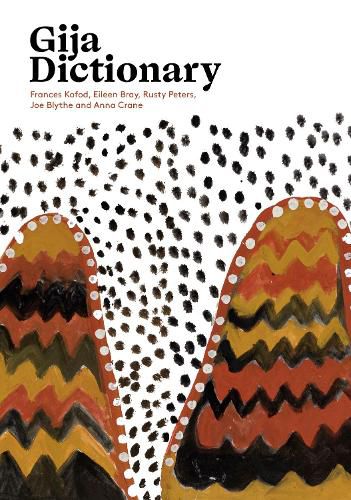Readings Newsletter
Become a Readings Member to make your shopping experience even easier.
Sign in or sign up for free!
You’re not far away from qualifying for FREE standard shipping within Australia
You’ve qualified for FREE standard shipping within Australia
The cart is loading…






Gija is a traditional language of the East Kimberley in the north-west of Australia. It is a landscape of weathered hills hugged by spinifex, startling rocky outcrops, hidden waterholes and dry riverbeds that turn to raging torrents in the wet season. Gija country extends north of Warmun (Turkey Creek) in the upper reaches of the Ord and Dunham rivers, south to Halls Creek and west to Lansdowne and Tableland stations. The Purnululu (Bungle-Bungle - Boornoolooloo) National Park sits in Gija country.
From the late 1800s, Gija people suffered devastating losses: invading pastoralists brought cattle that damaged waterholes and devastated the ecosystem; fortune hunters chased gold at Halls Creek; and government rounded up and forced people onto cattle stations. In the late 1960s when Aboriginal stockmen were granted equal wages, many were thrown off the land. This second wave of dispossession saw Gija people move to Wyndham and Halls Creek and later Warmun (Warrmarn), where most Gija people still live today. Many contributed to this dictionary including many well-known artists who use painting to pass on their linguistic knowledge.
Despite this tragic history of loss, Gija people remain on their country, living their culture and speaking language. This new dictionary of Gija, the most comprehensive ever published, is a testament to their resilience.
$9.00 standard shipping within Australia
FREE standard shipping within Australia for orders over $100.00
Express & International shipping calculated at checkout
Gija is a traditional language of the East Kimberley in the north-west of Australia. It is a landscape of weathered hills hugged by spinifex, startling rocky outcrops, hidden waterholes and dry riverbeds that turn to raging torrents in the wet season. Gija country extends north of Warmun (Turkey Creek) in the upper reaches of the Ord and Dunham rivers, south to Halls Creek and west to Lansdowne and Tableland stations. The Purnululu (Bungle-Bungle - Boornoolooloo) National Park sits in Gija country.
From the late 1800s, Gija people suffered devastating losses: invading pastoralists brought cattle that damaged waterholes and devastated the ecosystem; fortune hunters chased gold at Halls Creek; and government rounded up and forced people onto cattle stations. In the late 1960s when Aboriginal stockmen were granted equal wages, many were thrown off the land. This second wave of dispossession saw Gija people move to Wyndham and Halls Creek and later Warmun (Warrmarn), where most Gija people still live today. Many contributed to this dictionary including many well-known artists who use painting to pass on their linguistic knowledge.
Despite this tragic history of loss, Gija people remain on their country, living their culture and speaking language. This new dictionary of Gija, the most comprehensive ever published, is a testament to their resilience.